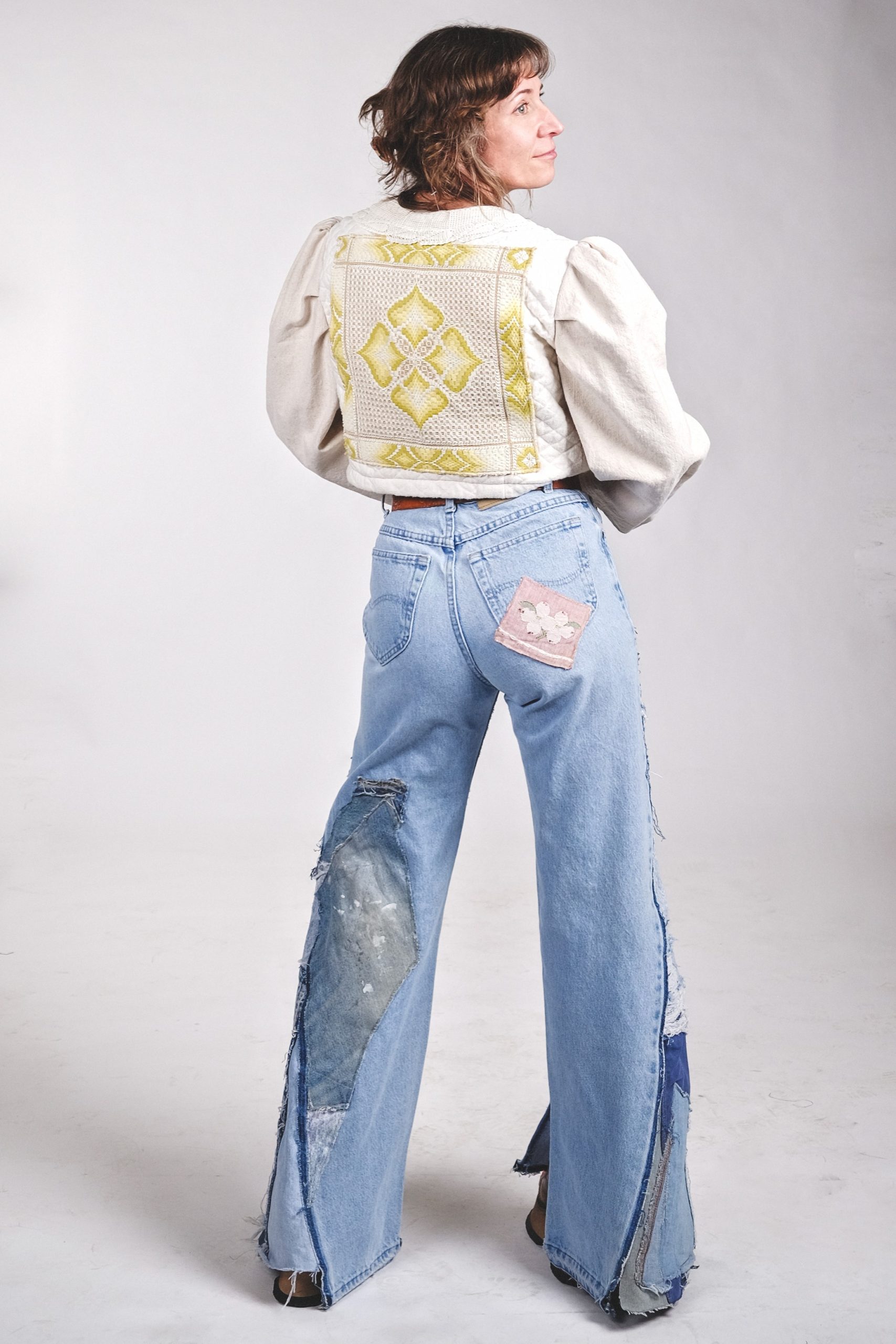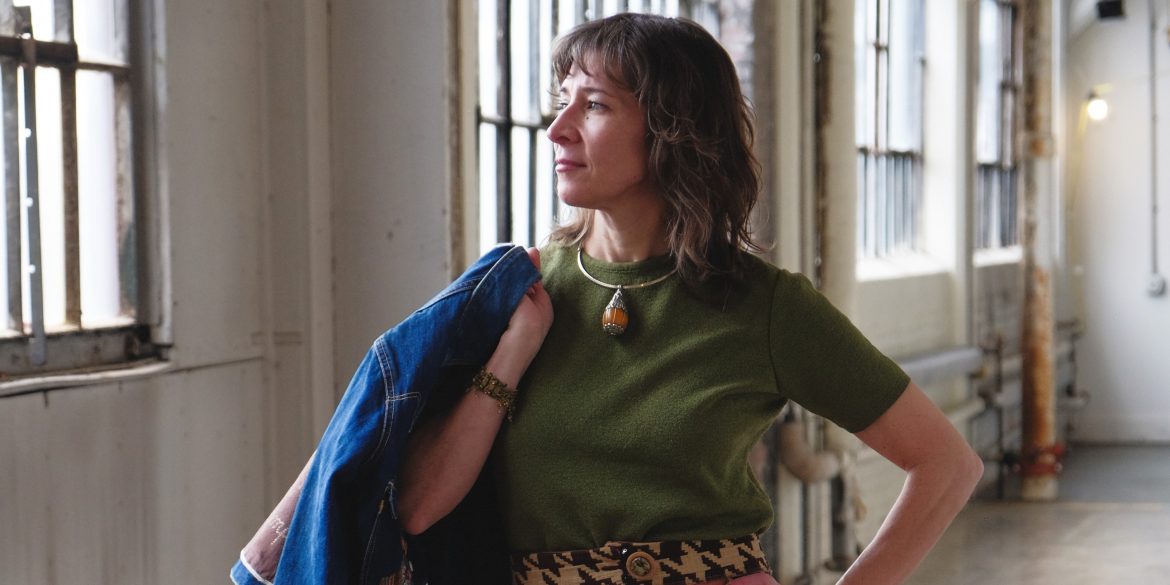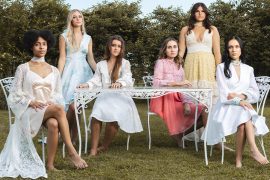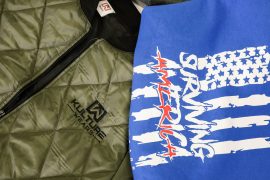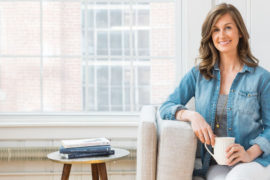Don’t go looking for indyvin on Instagram or Facebook—you won’t find it. Instead, Stephanie Nugent’s Indy-based, woman-run vintage upcycling and reselling business promotes slow-paced fashion. She prefers real-life connections to match one-of-a-kind pieces with one-of-a-kind people. Nugent’s goal is to give new life to pieces and fabrics from decades past with a healthy dose of inspiration from her fabric-filled childhood and 30-year professional dance career. She’s a self-proclaimed sucker for the 60s and 70s— her line is chock-full of bell-bottoms and funky patterns. You can find her at pop-ups around Indy, on the indyvin website, or on reselling apps Mercari, Depop and Poshmark. We had to see her pieces up-close, so Nugent popped into the PATTERN office to spill all the details on her love for inclusive, ethical, and historical fashion.

Katie Freeman: How did indyvin come to be created?
Stephanie Nugent: My mom is a visual artist and started out as a fiber artist, so when I was a kid, there was fabric and fleece and yarn and all kinds of stuff in our house. I loved the textures of them. She taught me how to sew and I started making my own patterns and dolls. Then, I got into dance and I would make my own costumes. I would go to thrift stores searching for costumes. When COVID hit, I left academia after 30 years. I had been doing vintage resale for about a year as a hobby and had been collecting recycled fabrics. I started sewing and it was a saving grace for me. It was how I was able to cope with not being in the dance world. Once COVID got a little better, I’d wear what I was making out to stores. Everywhere I went, people would ask me about it. One of the things I love about dance is the ability to communicate through it on a kinesthetic level. I’ve always loved fashion for the same reason. It’s how I can present what’s inside of me as an outfit. Another thing that I love about dance is engaging with other people and I can do the same thing through fashion. I started selling the things that I was making and telling people that I’m open to commissions. The goal is to make things that people love and they never want to take off—that’s the thing I live for.
KF: indyvin is green-based and looks to encourage environmental sustainability through slow fashion. How do you accomplish that?
SN: The fashion industry is one of the biggest polluters in the world, and fast fashion has to do with clothing that’s mass-produced in countries where the labor is cheap. It becomes cheap to buy it, wear it once and throw it away. Even if you donate the clothes you have to Goodwill or some other thrift store, a lot of it still ends up in a landfill. Buying secondhand is a really great way to help slow that down. Fashion is important. A lot of people may see it as frivolous, but I think it’s about self-expression; it’s about presenting yourself as you want to be in the world. By making things with recycled material or vintage materials that I find, I’m able to contribute to the fashion world while not contributing to the landfill.
KF: When you’re sourcing fabric or vintage pieces, what do you look for and where?
SN: When I’m searching for materials, I have to touch them. I grew up in the 70s, but I really love the 60s too, and the prints—I love the patterns in polyester. The old 60s polyester has a different kind of texture and weight to it and the colors are really vivid. I do a lot with denim. I’ll take vintage jeans and upcycle them, but I also find vintage denim, or sometimes I’ll find ‘filets’ of denim—they’re like jeans that people have split apart. I just collect. I’ve got so much denim in my house. No matter how many rips you put in a pair of jeans, you can’t replicate the natural wear and patina on clothes that have faded or gotten dirty. I love taking those pieces of denim apart. I’ll buy things at pop-ups, I’ll go to thrift stores. I’ve found some stuff at estate sales. My mom has all these materials from the 80s and 90s that she’s given me. A lot of it is just from family. Recently, I’ve been speaking to friends who are seeing what I’m doing, and they’re like, “I want to donate my stuff to you because I know it will be used.”
KF: Do you have a signature style of design?
SN: Most of my stuff leans into the 60s and the 70s. My bell-bottom pants were the things that got noticed the most. My work with denim is a signature, but I also love putting unusual pieces of material together. Patchwork is definitely involved, and quilting. Not that I can quilt, but usually I try to respect super old quilts that are still in good condition. It’s always a balance because I don’t want to disrespect the artists that made the original textiles, but I also want to bring new life so they’ll actually be enjoyed. A lot of people are doing patchwork stuff, so I think it’s the way I put things together that is more me.
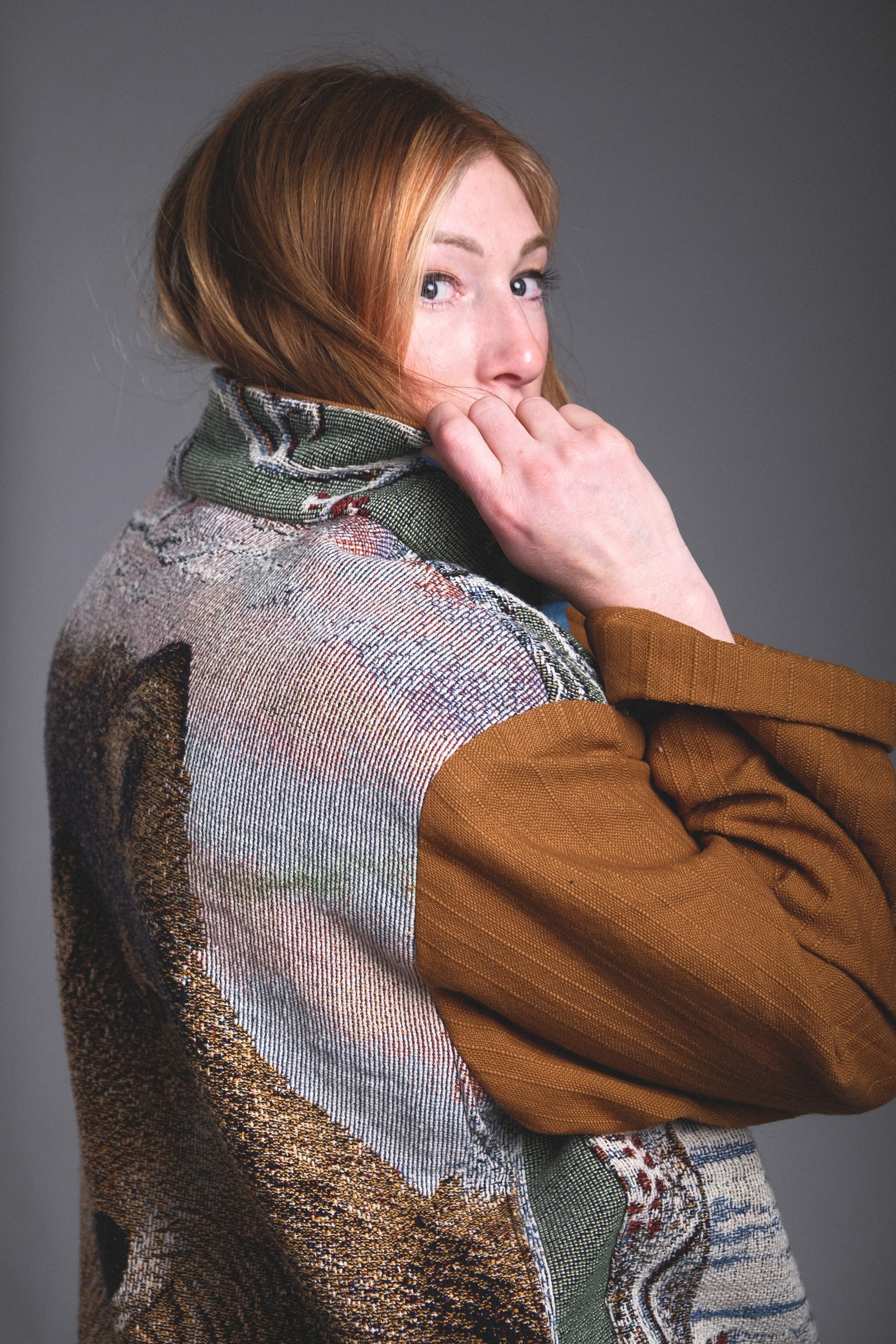
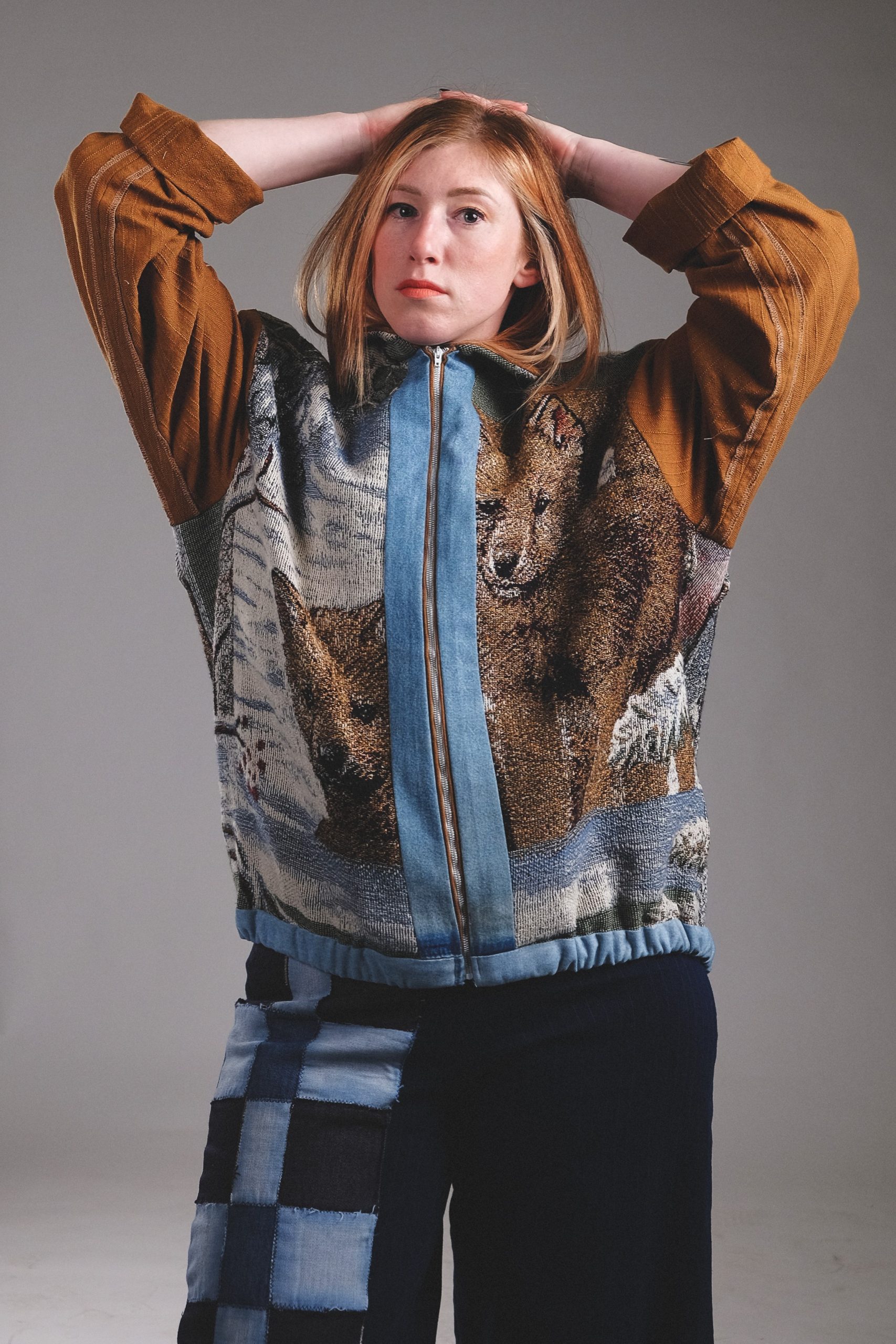
KF: When working with vintage pieces, you strive to respect the history and production of their original creators. How does this principle of respect guide the process of re-working vintage items?
SN: There are certain brands like vintage Levi’s. You can’t take a really old pair of Levi’s that are in good condition and tear them apart. If they’re beautiful as is, I’ll sell them as is. Other times, I’ll do things like split the side seams and add something so I’m not destroying the original piece. I’ll be careful to use a seam ripper to undo the seams so I’m not destroying the integrity of the material. When I’m using quilts, I try to use every bit of the quilt. I will serge the edges and sew them together, but instead of putting the right sides together, I’ll put the wrong sides together so that I can show the other side of the material. If I’m working with some vintage polyester and it’s a really awesome print, often the opposite side is really cool too.
KF: How does indyvin promote inclusive fashion?
SN: I’m doing one-of-a-kind pieces and I do a lot of commissions. I seek to make work for individuals and make a piece for them in particular, which allows me to be inclusive in a much more complex way than just making different sizes. I have a real interest in honoring and engaging with and being excited by people with differences. When I first started making my clothing, I was making it all my size because I was my best model. I didn’t know how to upsize and how to work with the proportions. And so there was a big learning curve experimenting. I loved upcycling for this reason because I could find vintage jeans in different brands. Chick is really curvy and Lee has longer rises. I could get people to find a base pair of pants that they really liked and upcycle.
KF: If customers go looking for you on Insta and Facebook, they’ll be out of luck. How does your decision to stay off social media play into indyvin’s goal to encourage slow-paced fashion production?
SN: When COVID hit and the world felt like such a toxic place, I got off social media. I was over that. With this new profession, that’s going to be my calling card. It’s one where I get to call the shots. I don’t need an Instagram page because I love the work that I do, and the people that buy the work and commission me love the work that I do, and that’s enough. Most of the original things I do are in-person purchases at pop-up markets. My passion is for working with people in person.

KF: So you’ve got pieces listed on your website, Depop, Poshmark and Mercari — what can customers find on each of those platforms?
SN: The different demographics of people lead me to put what I put on those different sites. I have my originals on Poshmark and Depop. Poshmark has most of my stuff and the majority of it is vintage resale and upscale. On Mercari, I also have vintage Barbies and home goods. I started Depop fairly recently because I felt like my originals spoke to that demographic. I also put some of my vintage stuff on Depop as well. My website is only my original recycled stuff. Also, Lux and Ivy recently had a grand reopening, and I’m going to have some of my pieces in store on consignment!
KF: Each piece you make is unique. How do you stay inspired throughout your creative process?
SN: I’ve hit little mini-walls. Usually, it’s because I’ve been in my studio from early in the morning until late at night, so my brain isn’t working anymore. But I have so many pieces of materials in my office. I will organize it so that I can see everything; I’ll pull it out and put it on the floor. Sometimes I’ll get to cutting things up and making quilted or pieced-together textiles. I may make the textile and not know what to do with it, and I’ll put it away and do something else and my studio will become a disaster area. I get frazzled and have to leave for a little while, and then I’ll come back, clean the whole thing and look at the stuff that I have anew. The main secret is that I have enough variety that I can improvise. I can be in the moment in my studio with my fabrics and explore and play and something starts to reveal itself. Sometimes I think I’m making one thing and then it ends up being something totally different. I would die if I had to make the same piece over and over again; being the creative that I am, I’m not sure it would be possible.
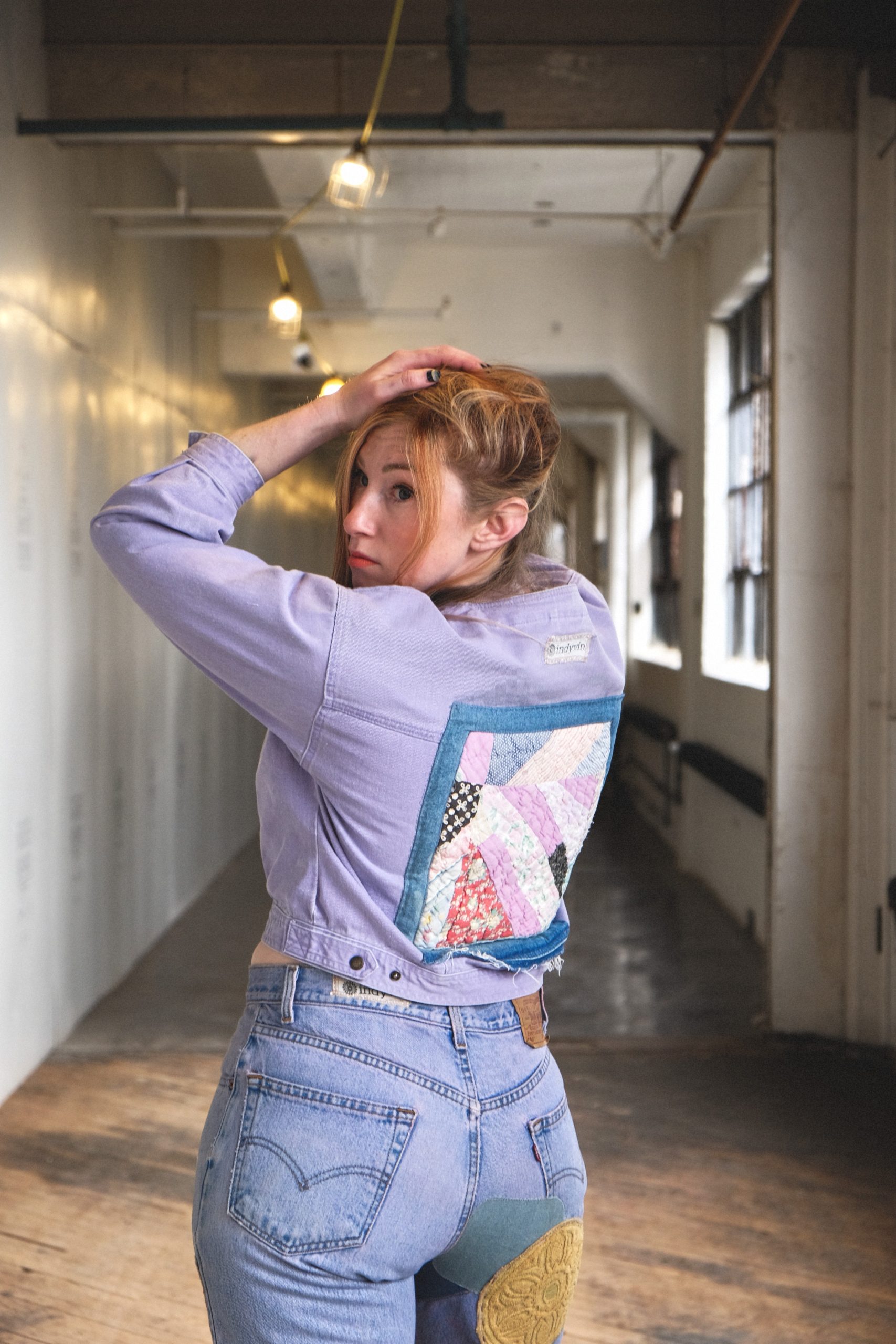
KF: What’s next for indyvin?
SN: We just got a CPA. We may make the big leap to an LLC—right now, I’m just a sole proprietorship. My cousin who’s in big business is like, “How are you going to upscale?” and I don’t know if I want to. I think what’s next is making sure that I don’t get ahead of myself, that I stay with my passion and that what I’m doing now is bringing in enough income that I don’t need to. I’m not making oodles of money, but that’s not my goal. It’s just to live. I’m doing enough of the business stuff that I can pay attention to how I want to live, how I want to show up in the world and how I want to engage with people.
